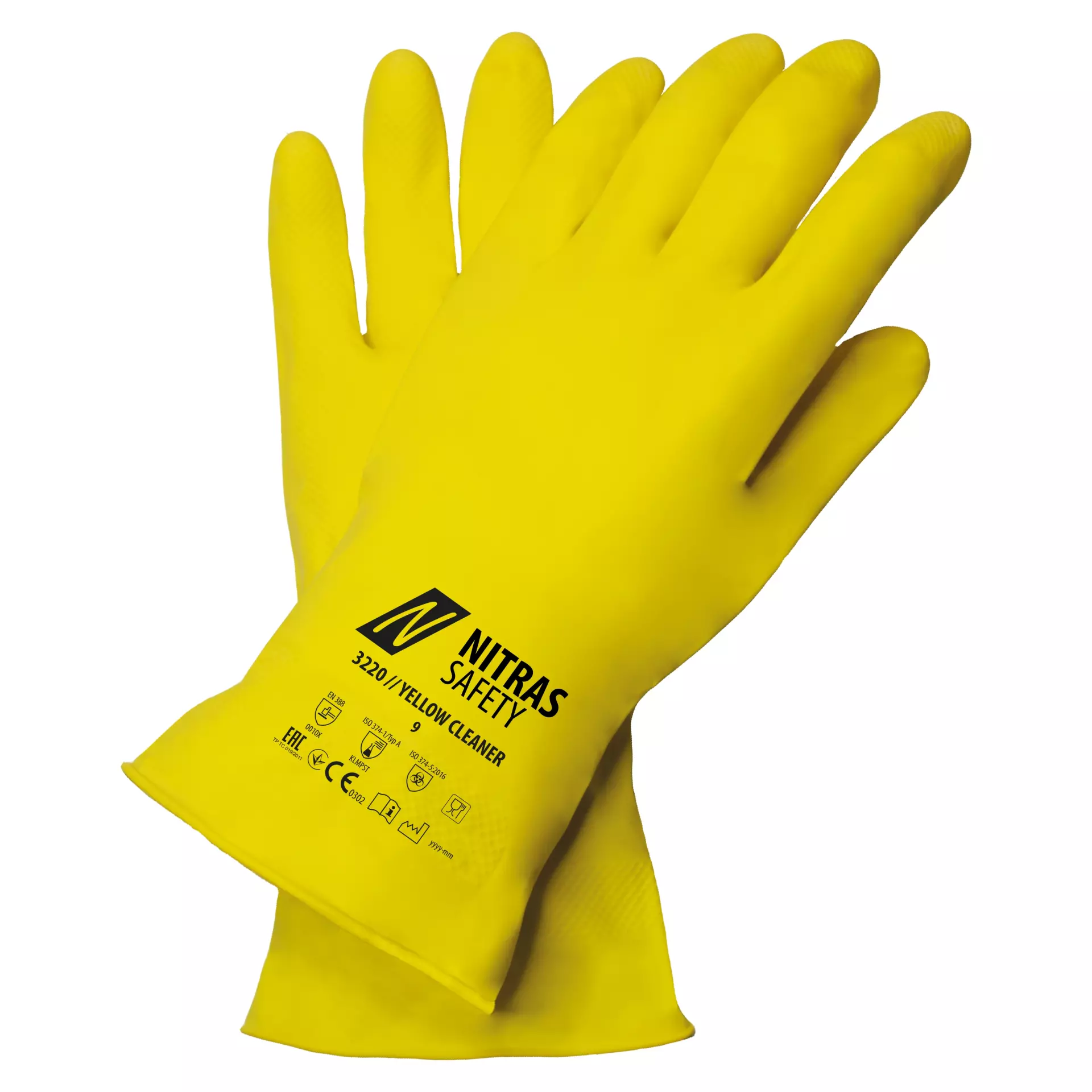

Features You'll Love

Cuff Style · Open
Determines how the glove secures around the wrist, affecting fit, protection from debris, and ease of putting gloves on and taking them off.

EN 388 · Puncture Resistance Level 0
Offers no protection against puncture hazards.
Nitras
YELLOW CLEANER Chemical Protective Gloves, Yellow, 12 pairs
YELLOW CLEANER Chemical Protective Gloves, Yellow, 12 pairs
4.8 / 5
18,40 €
Price per 12 pairs
1,53 € / pair
Choose size
Shipping fee is 7,95 € for orders under 80,00 €
Features You'll Love

Cuff Style · Open
Determines how the glove secures around the wrist, affecting fit, protection from debris, and ease of putting gloves on and taking them off.

EN 388 · Puncture Resistance Level 0
Offers no protection against puncture hazards.
Product description
These chemical protective gloves offer comprehensive protection against a wide range of chemicals, micro-organisms, and bacteria while maintaining excellent dexterity. The latex construction features a flock-lined interior for comfort during extended wear, with a consistent 0.3mm thickness throughout. Certified for food contact applications, these 30cm length gloves provide reliable protection while meeting multiple international safety standards.
Product Features:
- Flock-lined interior for comfort
- Uniform 0.3mm thickness construction
- Maximum dexterity rating (Level 5)
- Suitable for food contact
- Protection against micro-organisms and bacteria
Technical Details:
- Chemical resistance Type A protection
- Full hand latex construction
- 30cm length for extended coverage
- Penetration and permeation tested
Standards:
- EN 388:1010X certification for mechanical risks
- EN ISO 374-1:2016/Type A (KLMPST) for chemical protection
- ISO 374-5:2016 for micro-organism protection
- EN 420:2003 + A1:2009 for general requirements